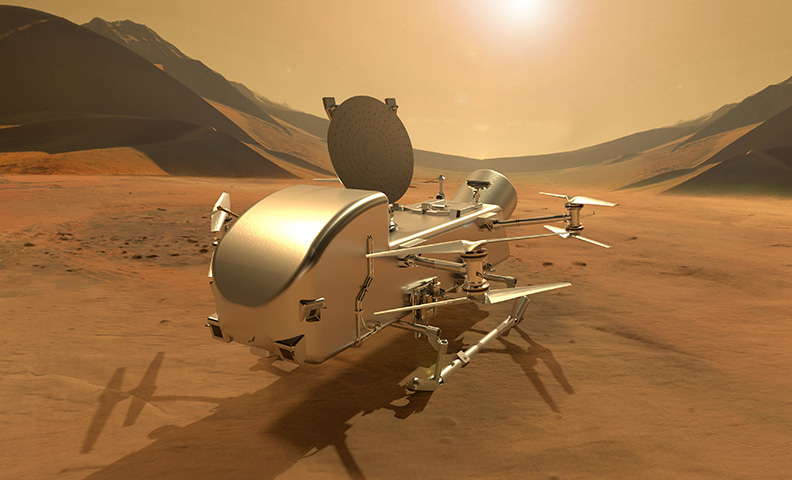Expanding Humankind's Knowledge
It was one of the boldest missions ever conceived: send a small spacecraft on a decade-long, 3-billion mile voyage to explore Pluto — and after that, trek another billion miles to deliver the first close-up images of a just-discovered Kuiper Belt object on the outskirts of the planetary frontier.
The mission design required a combination of creativity and precision that left little room for error — exactly the kind of unique challenge APL has taken on since the dawn of the space age itself. The mission team had to direct a piano-sized probe to an exact place at an exact time to gather as much data as possible. And in July 2015, the mission named New Horizons returned the first close-up images and in-depth data on Pluto and its family of moons. Then, less than four years later, it repeated the feat at the Kuiper Belt object Arrokoth — providing an unprecedented look at one of the ancient building blocks of the solar system.
Accomplishing ambitious missions is what APL engineers and mission designers do. Learn more about their abilities and successes.
Areas of Expertise

The engineers and mission designers at Johns Hopkins Applied Physics Lab team up with our scientists to craft realizable solutions to problems once deemed too costly or time-consuming to solve. This collaborative spirit keeps APL at the forefront of space exploration — imagining, designing and building the spacecraft and instruments that evolve our understanding of our planet, Sun, solar system and beyond.
Our Expertise at Work
- Parker Solar Probe: APL developed a revolutionary heat shield (that can withstand temperatures in excess of 2,500 degrees) and the mission plan that is allowing the spacecraft to make multiple flights through the Sun’s corona to study the solar wind at its source.
- New Horizons: APL designed and built a spacecraft that returned the first close-up photos of a Kuiper Belt object — 4 billion miles from home — capturing a dead-center image while traveling at 31,000 mph.
- Dragonfly: APL is designing a rotorcraft-lander mission to Saturn’s moon Titan, preparing a robotic emissary to explore this organically rich world in unprecedented detail while flying autonomously — a billion miles away from operators on Earth — in temperatures approaching minus 300 F.
Our deep expertise includes:
- Flight and ground software
- Guidance, navigation and control
- Integration and test
- Mechanical systems
- Mission formulation and analysis
- Mission operations
- RF communications
- Space environmental effects
- Spacecraft autonomy
- Spacecraft power engineering
- Spaceflight parts and packaging
- Systems engineering
APL Labs & Facilities

APL’s ideas and designs come to life in our state-of-the-art labs and facilities, where we build spacecraft and instrumentation, operate missions across the solar system, and turn the data we collect into information that increases humanity’s understanding of the universe.
APL’s labs and facilities include:
- Environmental test facility
- Satellite communications facility
- Simulated airless body emission laboratory
- Radio science laboratory
- Planetary nuclear spectroscopy laboratory
- Planetary impact laboratory
- Optical calibration facility
- Meteorite laboratory
- Laboratory for spectroscopy under planetary environmental conditions
- Time and frequency laboratory
- Compact and outdoor antenna ranges
- Concurrent engineering laboratory
- Planetary protection laboratory
- Multimission operations center


